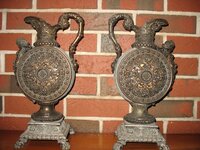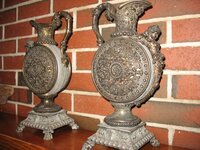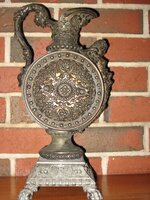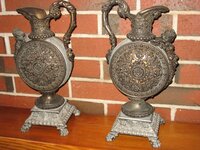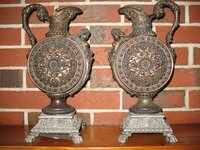AlKimberley
Newbie
- Apr 5, 2012
- 3
- 0
- Primary Interest:
- All Treasure Hunting
I have no idea what these items are and need help in identifying them. My 81 year-old mother gave them to me and told me that they belonged to her grandmother. The grandmother lived in Philadelphia, PA from about 1870 to 1930.
The items have no markings and although they appear to be pitchers but there is a metal plate at the opening on the top of the pitcher body that seals the top. I’m guessing that they are just ornamental. They appear to be some type of metal cast on the base and sides with bronze or brass gilding on the front and back and the handles. They are quite heavy and weigh approximately 8 to 10 lbs. each.
The items have no markings and although they appear to be pitchers but there is a metal plate at the opening on the top of the pitcher body that seals the top. I’m guessing that they are just ornamental. They appear to be some type of metal cast on the base and sides with bronze or brass gilding on the front and back and the handles. They are quite heavy and weigh approximately 8 to 10 lbs. each.


